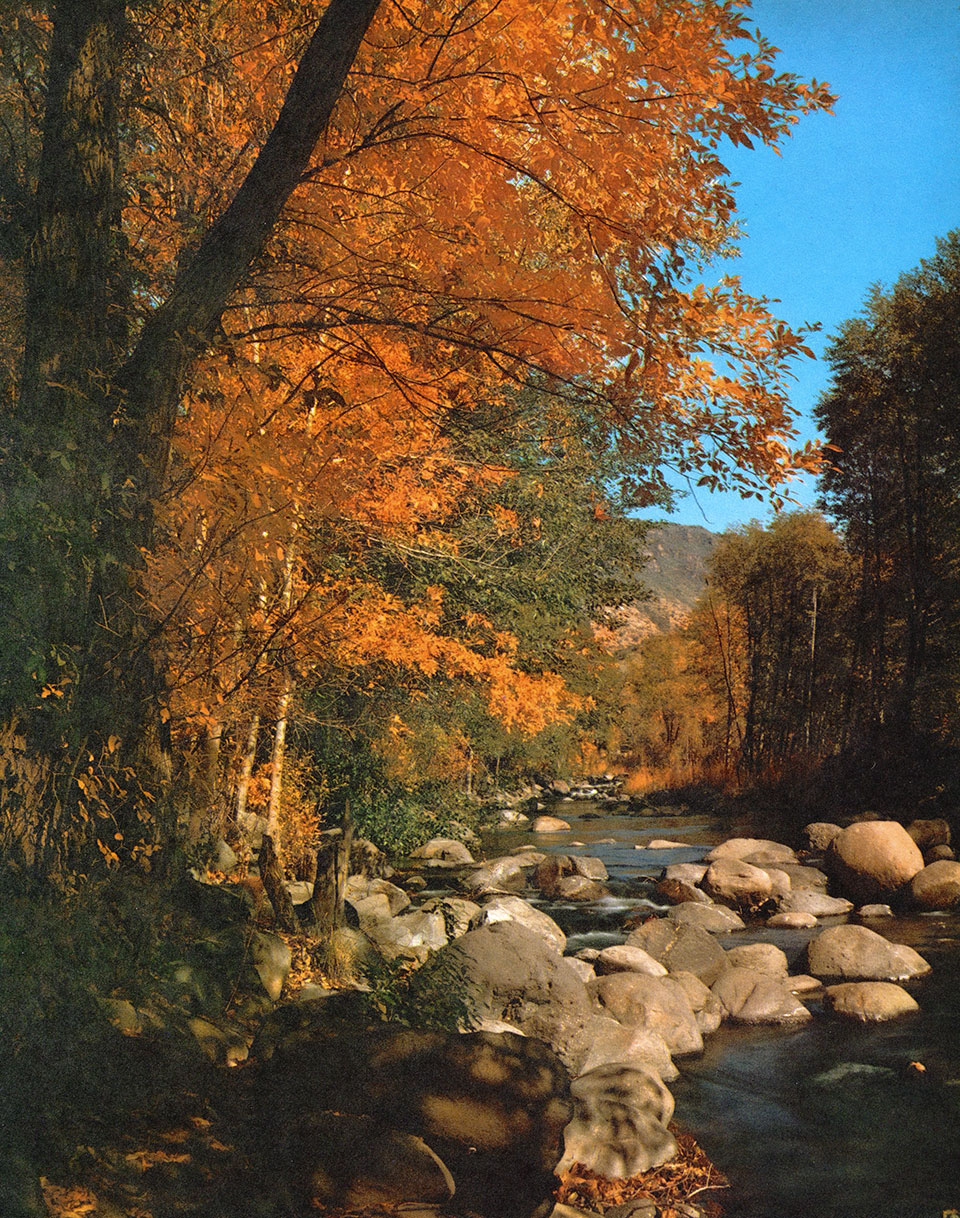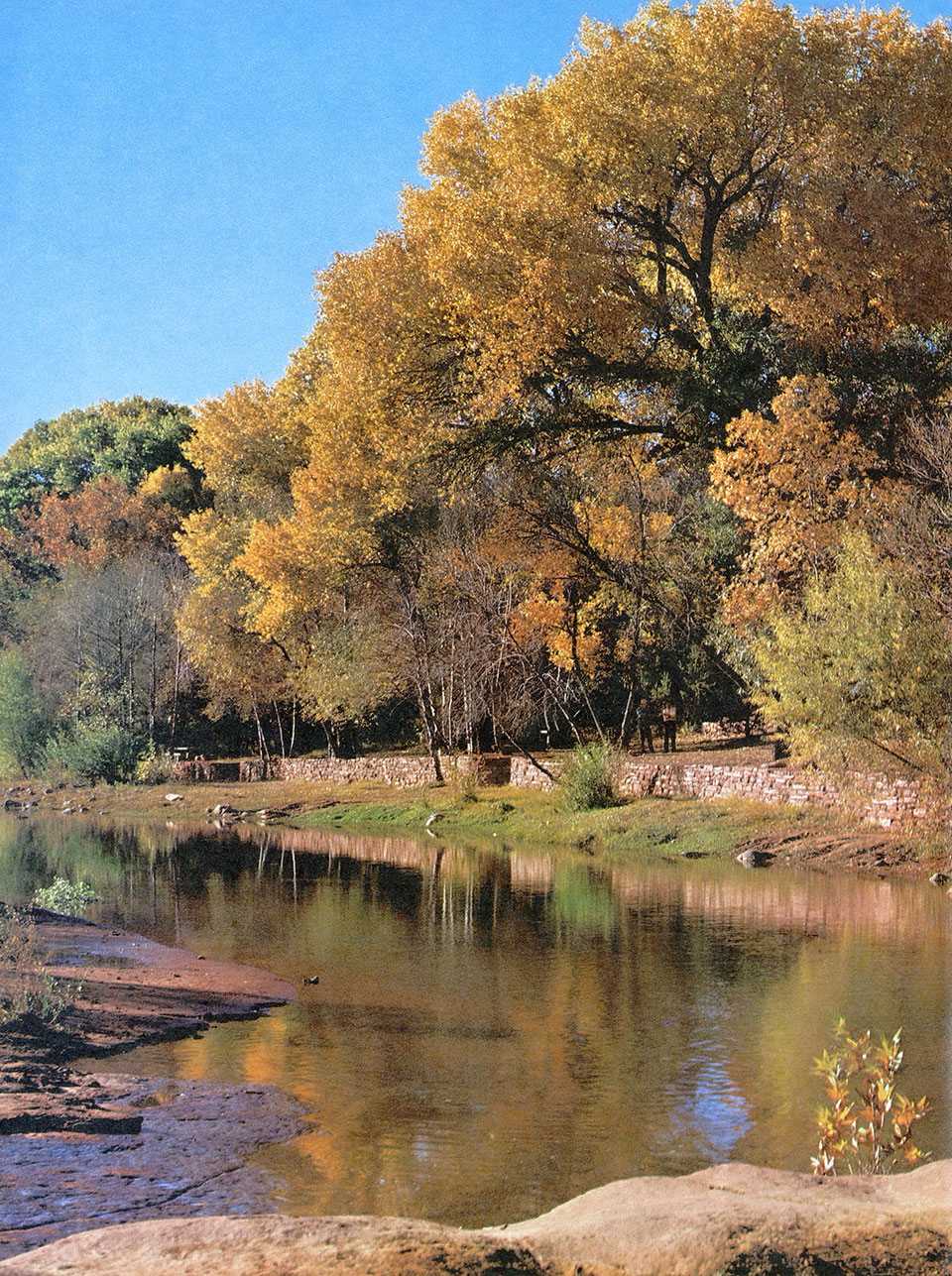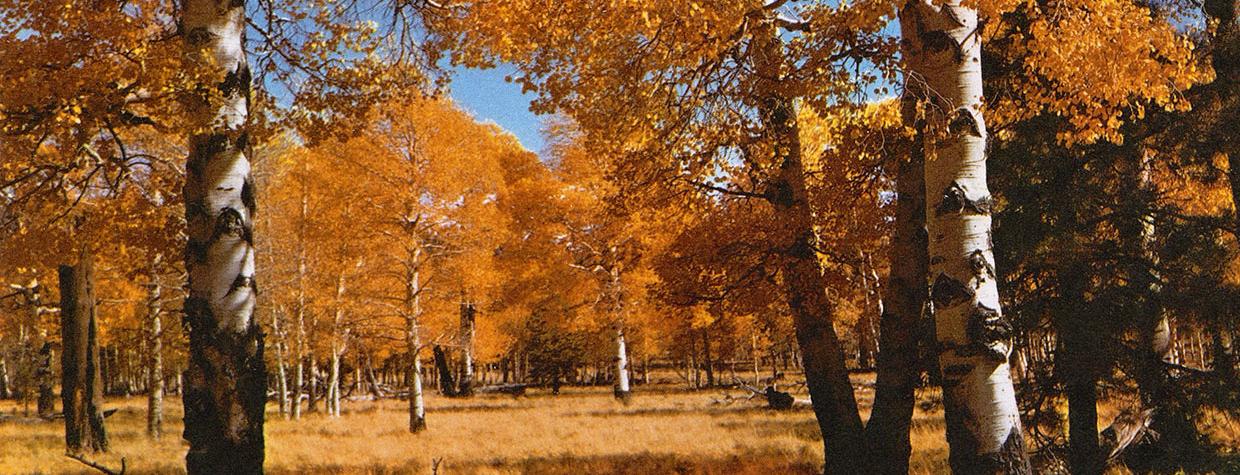The touch of Midas is felt throughout the highlands at this time of the year and the Season’s touch has turned much of the green to gold. Is there anything in all of Nature so radiant as an aspen grove whose green dress has turned the color of a heap of polished golden-yellow coins, vibrant and alive in the cool, crisp sunlight of a high October day? Or the cottonwoods and sycamores along a lowland creek in early November whose leaves, just a few days ago shimmering green, casting cool shadows of welcome relief against the hot sun, have changed to the color of gold coins slightly burnished by usage, and whose music is crackly and dry in the wind?
This wondrous Season has such a power and impact on the bedazzled senses of the poor beholder it is the only Season of the year with two names: Autumn and Fall. To straighten out our own bedazzled senses in this matter, it is time to call on the experts before we proceed with our narrative, so that we can proceed properly and correctly.
Webster, usually authoritative and concise, describes Autumn as “the third season of the year between summer and winter — in America commonly called fall.” (Sounds like he’s hedging a little bit, to us.) Our beloved, admirable and crusty old friend, Fowler, in Modern English Usage (to whom we turn for a more complete explanation), seems to get a trifle hot under the collar when he writes: “Fall as the synonym for the ordinary autumn is either an Americanism or provincialism or archaism. As the last, it has its right and wrong usage. As either of the others, it is out of place except in dialogue.” (That’s putting it right on the line, our esteemed English friend.)

In his The King’s English, he becomes more gentle and considerably more explanatory in discussing this subject. He writes: “It must be recognized that they and we [he is discussing the Yankees and the English], in parting some hundreds of years ago, started on slightly divergent roads in language long before we did so in politics. In the details of divergence, they have sometimes had the better of us. Fall is better on its merits than autumn, in every way: It is short, Saxon (like the other three season names), picturesque; it reveals its derivation to everyone who uses it, not to the scholar only, like autumn; and we once had as good a right to it as the Americans, but we have chosen to let the right lapse, and to use the word now is no better than larceny.”
We promise our dear friends in England who will read these few lines of ours that we would never think of them as “larcenists” if they use fall instead of autumn, and as for us, we’ll use both with gay abandon, because they are both beautiful words describing the beautiful Season, and we’ll go merrily on our way.
“Autumn” or “fall” (you takes your choice and you gets there all the same — poor Mr. Fowler would turn over in his grave if he could see English, the King’s or otherwise, written like that) is one of the most beautiful and brightest of all the seasons that bestride this blessed landscape we call “Arizona.”

The season with the touch of Midas has a timetable that never runs exactly on schedule, but, generally, if one wishes to take the Golden Tour at the best time for the coloring, it would be well to start way up in the Kaibab around the first of October. Such a time-start would give you a glorious trip through the Kaibab Forest from Jacob Lake to the North Rim of the Grand Canyon over a hard-surfaced road through aisles of shimmering, golden aspen broken by meadows and stands of green pine and blue-green spruce, whose contrast in color merely accents the appeal of the scene. At the North Rim, if you are at the right time and the right place, you might come along avalanches of Autumn’s color where the trees cling precariously to some of the gentler sloped canyon walls and where the color in the trees mixed with the color of the Canyon walls is something to see or photograph, but not to write about.
On the slopes of San Francisco Peaks, near Flagstaff, if you are lucky enough to be about the first week in October you should, indeed, be charmed by the touch of Midas in the aspen groves and the aspen aisles through which lazy side roads seem to wander without purpose. In the serene and remote White Mountains, early October is also the time for the color to be at its most vivid. Here you’ll find tall, color green mountains wearing patches of bright yellow and gold, and the patches will tell you that sometime long ago there was a forest fire and when the earth cooled from the ashes the venturesome aspen moved in to prepare the ground for the return of the pine.
As October grows older the Golden Season moves slowly to lower elevations until early November the touch of Midas is felt upon the sycamores and the cottonwoods, and then another golden treasure is yours again to behold and enjoy and you will have been showered with all the riches, the Golden Season, whether you call it “autumn” or “fall.”

